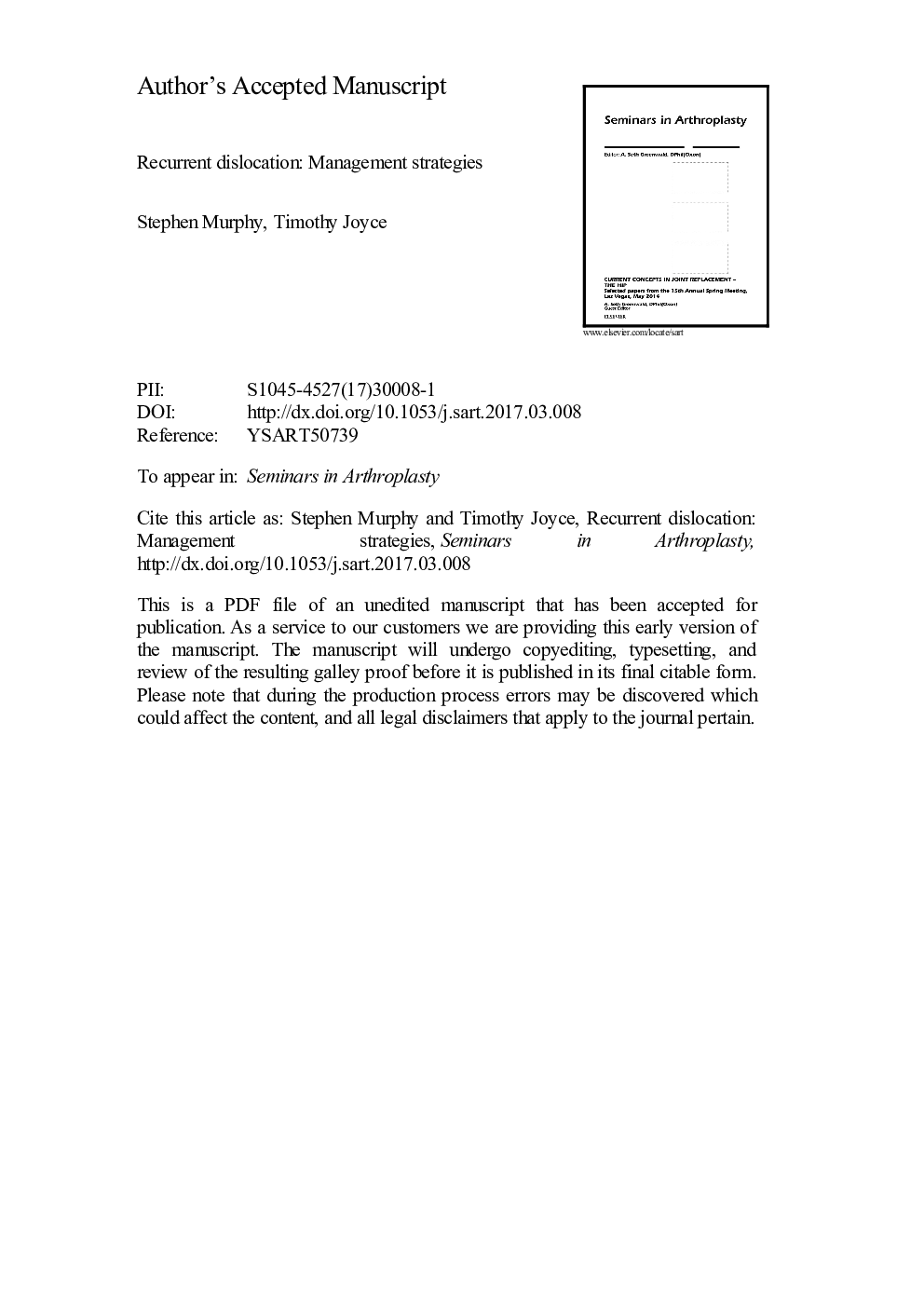| Article ID | Journal | Published Year | Pages | File Type |
|---|---|---|---|---|
| 5712425 | Seminars in Arthroplasty | 2016 | 9 Pages |
Abstract
Success in the treatment of recurrent instability following total hip arthroplasty depends upon the correct identification of the root cause. Causes include component malposition, soft tissue deficiency, impingement, late wear, and mechanical failure. Occasionally, the cause of recurrent instability cannot be determined. Assessment of the unstable hip begins with the history, examination, and interpretation of plain radiographs. Component malposition is bested assesd by CT and soft tissues are best assessed by MR. Dynamic issues can be assessed by examination under fluoroscopy. Whenever possible, treatment should be focused on correcting a very specific issue. Salvage treatments such as dual mobility or constrained components should be reserved for the rare cases where the cause cannot be determined or corrected.
Related Topics
Health Sciences
Medicine and Dentistry
Orthopedics, Sports Medicine and Rehabilitation
Authors
Stephen MD, Timothy MD,
